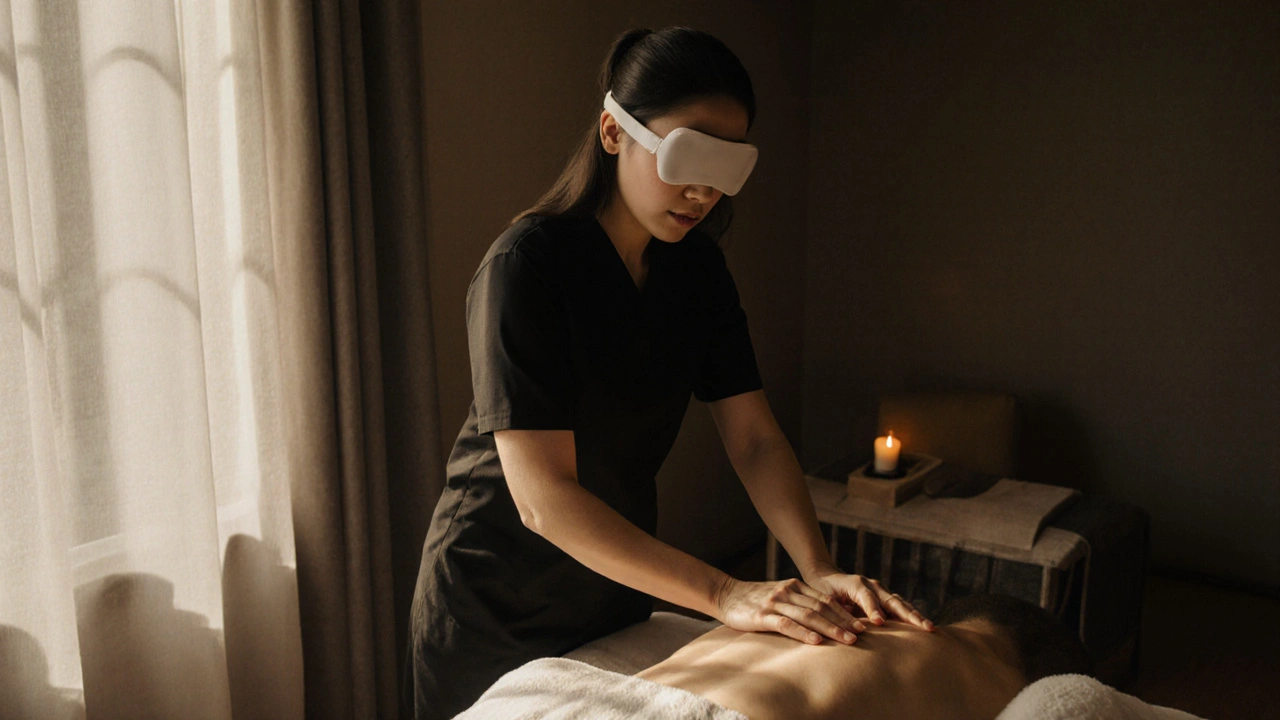Relaxation therapy: simple, proven ways to calm your body and mind
Stress shows up as tight shoulders, bad sleep, and a short fuse. Relaxation therapy isn’t a luxury — it’s a set of tools you can use today to feel better fast. Below are clear, practical methods you can try at home or with a therapist, plus quick rules to know when to get professional help.
Quick techniques you can use today
Breathing: Try box breathing — inhale 4, hold 4, exhale 4, hold 4. Do five cycles and notice your heart rate drop. Progressive muscle relaxation: tense each muscle group for 5 seconds, then release. Work head to toe in one sitting and you’ll sleep easier that night.
Acupressure: Press the web between thumb and index finger for 30–60 seconds to ease headaches. For stress, press the inner wrist point about three finger-widths from the base of the palm. These are cheap, safe tricks to use anywhere.
Short movement: Gentle Feldenkrais-style movements or simple yoga stretches for 10 minutes break pain-spasm cycles. If sitting all day, stand and do slow spine twists and hip circles to reset posture and calm nerves.
Choosing a therapy: what works and when
If you want hands-on relaxation, pick the technique that matches your needs. Hot stone or warm-stone massage soothes deep tension and helps with winter blues. Trigger point or deep-tissue work targets specific knots that limit movement. Lomi Lomi, Hilot, or Kahuna offer a more rhythmic, whole-body approach if you want emotional release along with muscle care.
For chronic pain or posture issues, look into Hellerwork, Rolfing, or Ortho-Bionomy — these focus on body alignment and long-term change, not just temporary relief. Feldenkrais and mindful movement help prevent injuries and make yoga or running feel easier.
Want a gentle, comforting touch? Palliative massage and blind massage are excellent for sensitive clients or end-of-life care. If energy balance matters to you, try polarity therapy or Esalen-style sessions that blend touch and talk.
Picking a therapist: ask about training, experience with your issue, and whether they adapt pressure or pace. Read a few recent client reviews and ask how they handle pain or medical conditions. Trust your gut — a short phone call can tell you if the therapist listens.
Safety and timing: avoid deep work right after surgery, if you have uncontrolled blood pressure, or during certain skin conditions. Always mention recent injuries, medications, and medical diagnoses before a session.
Start simple: two 10-minute home practices a day plus one weekly bodywork session can cut stress and improve sleep within two weeks. Mix techniques — combine breathing with a short self-massage or a guided Feldenkrais lesson — and you’ll get faster, longer-lasting results.
Want a list of local treatments or step-by-step how-tos for a specific method? Check our articles on acupressure, Amma, Feldenkrais, and stone therapy for clear, practical guides you can try right away.

Blind Massage: The Soothing Therapy Trend Taking Over Spas and Homes
Blind massage is a growing relaxation therapy where visually impaired therapists use heightened touch to relieve tension and stress. More effective than traditional massage for many, it’s grounded in deep training and sensory precision.

Discover the Serenity of Balinese Massage: A Path to True Relaxation
Explore the world of Balinese massage, a traditional technique that relaxes the body and mind. Learn about its origins, techniques, and how it can help reduce stress. Discover tips for finding the right practitioner and incorporating this soothing therapy into your routine. Immerse yourself in a journey toward serenity and well-being.
Categories
- Health and Wellness (148)
- Alternative Therapies (86)
- Massage Therapy (40)
- Travel and Culture (15)
- Beauty and Skincare (9)
- Holistic Health (8)
- Health and Fitness (5)
- Spirituality (5)
- Other (2)
- Personal Development (2)
Popular Articles



